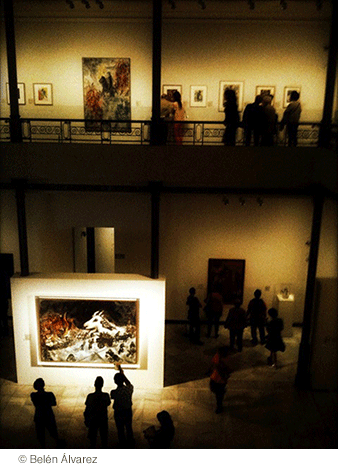Art Inflation
© Guillermo Labarca

 Nowadays, 90% of art production isn´t worth much in terms of its artistic value, including art photography... perhaps the figure isn´t exact, but it gives an idea. This isn´t a new phenomenon, apparently it has always been like that. For as long as there has been art, the production of art works with artistic pretentions but little artistic value has been enormous. If we look for examples, we will find a large number of value-less cubists we didn´t know existed, the same with impressionists, storage rooms of museums are filled with sugar-coated neoclassics, let alone the legion of artistic photographers that use special effects with the sole aim to cause a superficial impact. Currently this phenomenon has reached monumental proportions, anyone strolling along one of the numerous art fairs can verify this. This happens mainly because it has never been so easy to make objects, compose music, produce or reproduce images, dance or act. Today anyone can do any of those things, there are no prerequisites of quality or content, some 1000 words are all that is needed to be considered art. It is hard for artists, those who have something to say or express, there is a great temptation of recurring to easiness, especially because some are succesful when they follow that path. This is how there has always been a disproportionate production of pseudo art works.
Nowadays, 90% of art production isn´t worth much in terms of its artistic value, including art photography... perhaps the figure isn´t exact, but it gives an idea. This isn´t a new phenomenon, apparently it has always been like that. For as long as there has been art, the production of art works with artistic pretentions but little artistic value has been enormous. If we look for examples, we will find a large number of value-less cubists we didn´t know existed, the same with impressionists, storage rooms of museums are filled with sugar-coated neoclassics, let alone the legion of artistic photographers that use special effects with the sole aim to cause a superficial impact. Currently this phenomenon has reached monumental proportions, anyone strolling along one of the numerous art fairs can verify this. This happens mainly because it has never been so easy to make objects, compose music, produce or reproduce images, dance or act. Today anyone can do any of those things, there are no prerequisites of quality or content, some 1000 words are all that is needed to be considered art. It is hard for artists, those who have something to say or express, there is a great temptation of recurring to easiness, especially because some are succesful when they follow that path. This is how there has always been a disproportionate production of pseudo art works.
The inflation of art is linked to the institutions that control society in each epoch: churches, royal or imperial courts, governments and nowadays, markets. To function, all societies have established sacred spheres. Art is a field where the “sacred” thrives, because the connection with that which is true, good, beautiful, harmonic or whatever it is that a work of art (or something that intends to be) communicates, appeals to subjectivity, feelings, emotions adjoined with experiences that cannot be put into words or concepts, they can only be reproduced from subjetivity. Communication isn´t unequivocal, the observer, reader or listener must contribute to establish meanings. This is undoubtedly a dangerous territory, the danger of falling is great, especially because an “error” in judgement reveals the weaknesses, deficiencies or lacks of its perpetrator, that is why it is currently important to have institutions that can give guarantees, that what we see or hear has a secure value. Subjectivity is typically moderated by the institutions that dominate the cultural scene. Todays societies are crudely governed by money (all societies are dominated by money, but in other times there were mediations between material gains and individuals, like the Nation, the existing version of God, the local space, etc) and a work of art is primarily an investment; institutions that manage them are required to assure their value will remain over time. It is like claiming that central banks have to guarantee the permanence of the value of the euro, dolar or peso.
Those of us who do things “for the love of art”, a concept that provokes suspicion and incredulity, like making this magazine and welcoming photographers that are as quixotic as we (and not as quixotic as well) live in a world of extreme freedom. We do not need guarantees nor endorsements, we aren´t impressed by resumes nor awards, but we have an obligation to develop a critical judgment to maintain our autonomy.

